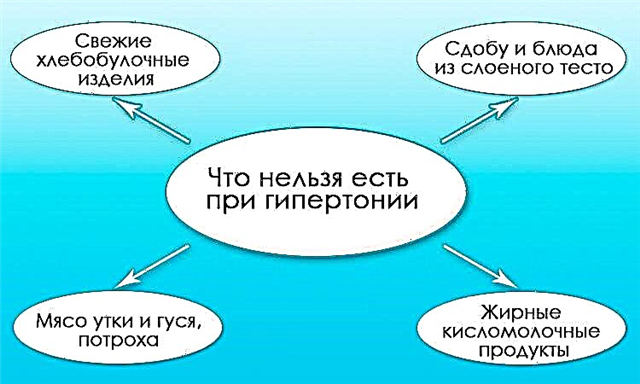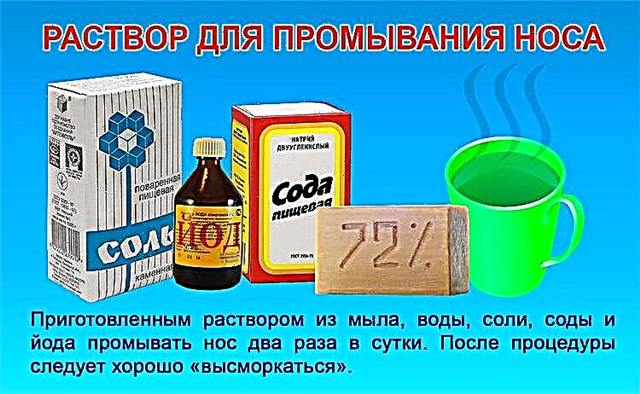Adenoids - hyperplasia of the glandular tissue of the pharyngeal tonsil, which in 84% of cases occurs against the background of frequent relapses of respiratory diseases. Is it possible to treat adenoids in children without surgery?
 Komarovsky argues that non-infectious pathology is easily amenable to drug therapy in case of timely contact with a pediatrician.
Komarovsky argues that non-infectious pathology is easily amenable to drug therapy in case of timely contact with a pediatrician.
The nasopharyngeal tonsil is an important component of local immunity, which prevents the multiplication of pathogens in the mucous membranes of the airways. Removal of the organ entails a decrease in the reactivity of the child's body, as a result of which relapses of colds become more frequent. That is why adenotomy is prescribed for children only at stages 2 and 3 of the development of ENT pathology.
Why are adenoids dangerous?
Practicing pediatrician E. Komarovsky strongly discourages an adenotomy in the absence of serious indications.
It should be understood that the removal of the immune organ inevitably leads to an increase in the infectious load on the remaining components of the lymphoid pharyngeal ring. The subsequent decrease in local immunity entails inflammation of the respiratory system, which is fraught with the development of chronic diseases such as tonsillitis, bronchitis, bronchial asthma, etc.
Why do adenoids occur in children? The cause of the appearance of adenoid enlargements is the frequent inflammation of the upper parts of the ENT organs - the nasal cavity, laryngopharynx, middle ear and paranasal sinuses. Due to the failure of the immune system and the incessant attacks of pathogens, the number of structural elements in the adenoid tissue increases. Due to this, the infectious load experienced by the palatine, tubal and other types of tonsils is compensated.
The enlargement of the nasopharyngeal tonsil entails a narrowing of the inner diameter of the nasal canals and the openings of the auditory tubes. Impaired ventilation of the middle ear and nasopharynx leads to the appearance of such pathological symptoms as:
- hearing loss;
- nasal congestion;
- recurrent headaches;
- mental retardation;
- frequent relapses of infections.
Important! Delayed treatment of benign nasal tumors leads to irreversible changes
facial skull and malocclusion.
According to E. Komarovsky, timely diagnosis and adequate treatment of adenoids can eliminate unpleasant symptoms and prevent formidable consequences. However, the pediatrician warns that conservative and physiotherapeutic treatment can be limited only with slight hyperplasia of the immune organ.
Principles of therapy
How to treat adenoid vegetations? Modern methods of therapy for ENT pathology are divided into two categories - conservative (physiotherapy, pharmacotherapy) and surgical (laser, scalpel and radio wave removal of adenoids). In most cases, specialists manage to solve the problem without resorting to surgical intervention. Adenotomy is the most traumatic and dangerous method of treating a hypertrophied tonsil, therefore it is used in case of emergency.
Conservative methods of therapy for adenoid vegetations include:
- pharmacotherapy;
- physiotherapy;
- climatotherapy;
- laser therapy;
- manual therapy.
The likelihood of success of conservative treatment of ENT pathology depends on the degree of hypertrophy of the nasopharyngeal tonsil.
E. Komarovsky is sure that it is possible to restore the normal physiological dimensions of the amygdala only in the case of complex treatment of pathology. If a child complains of constant nasal congestion and the flow of viscous mucus along the walls of the pharynx, one should not refuse to carry out sanitizing procedures. Irrigation of the nasal cavity will help restore mucociliary clearance and cleanse the follicles of lymphoid tissues from pathogens and tissue detritus.
Rinsing the nose
Patients with the first and second degree of adenoid development are often prescribed nasal lavage with anti-inflammatory and antiseptic drugs. Cleansing the nasal passages from mucus, purulent plaque and tissue detritus helps to restore the drainage function of lymphoid accumulations and, accordingly, reduce the size of the pharyngeal tonsil.
Irrigation therapy is indicated for children with severe allergic diseases, as it reduces the sensitivity of histamine receptors.
The following medicinal solutions are most often included in the treatment regimen for ENT diseases:
- Humer;
- Physiomer;
- Aqualor Baby;
- Miramistin;
- Dolphin;
- Aqua-Maris.
Saline isotonic and hypertonic solutions have pronounced anti-edematous and antiphlogistic properties. A decrease in the level of acidity in the mucous membranes of the respiratory system prevents the reproduction of opportunistic microbes, thereby reducing the likelihood of developing septic inflammation of the immune organ. On the advice of Komarovsky, after washing the nasopharynx, it is advisable to use nasal herbal remedies that prevent the drying of the mucous epithelium.
Nasal preparations
What drugs can be used to treat grade 2 adenoids in children? The second degree of hyperplasia of the tonsil is characterized by the overlap of the nasal canals and the vomer by about 30-35%. In this regard, the child begins to complain of discomfort in the paranasal sinuses and nasal congestion. Choanal obstruction leads to the accumulation of mucus in the nasopharynx, resulting in a feeling of pressure in the paranasal sinuses.
It is possible to relieve the symptoms of adenoids and restore the patency of the nasal passages using the following nasal remedies:
- "Protargol" - nasal drops with a disinfectant and anti-inflammatory effect; colloidal solution gently cleanses the mucous membrane from pathological secretions, simultaneously destroying up to 86% of pathogens;
- "Nasonex" is a glucocorticosteroid anti-inflammatory agent that eliminates edema in adenoid tissues; inhibits the synthesis of inflammatory mediators, which prevents the appearance of allergic reactions;
- "Avamis" is a fluorinated spray of antiseptic and anti-edematous action, has pronounced analgesic and antiphlogistic properties; accelerates redox reactions in tissues, which helps to restore normal patency of the nasal canals;
- Nazol Kids is an intranasal drug with adrenomimetic activity; has a vasoconstrictor and antiallergic effect and can be used to treat chronic rhinitis.
Abuse of nasal vasoconstrictor drops entails the appearance of side reactions - headaches, nausea, burning sensation in the nasopharynx.
Adenoiditis
How can adenoiditis in children be cured? E. Komarovsky reports that many parents consider adenoids and adenoiditis related concepts, although this is not the case. Adenoids are hypertrophy of the immune organ, and adenoiditis is its inflammation. In the case of the development of purulent or catarrhal processes, treatment should be accompanied by the intake of drugs not only symptomatic, but also pathogenetic. In other words, inflammation can be eliminated by using medications aimed at destroying the pathogenic agents that caused the pathological reactions.
Eliminate adenoiditis allows taking the following drugs of pharmacotherapy:
- antibiotics - "Amoxiclav", "Zinacef", "Flemoxin Solutab";
- antiviral agents - Anaferon, Rimantadin, Orvirem;
- anti-inflammatory drugs - Nimesulide, Ibuprofen, Nise;
- immunostimulating drugs - "IRS-19", "Ribomunil", "Immunal";
- reparative medicines - "Elbona", "Bepanten", "Moreal-plus".
Important! Immunostimulants should not be used when treating patients under the age of 3 years, as they can negatively affect the immunological reactivity of the child's body.
Medicines for the treatment of infectious diseases should be selected only by the attending physician. When choosing medicines, the pediatrician is guided by the results of microbiological and virological analysis.
Adenoids - to remove or not?
How to treat grade 3 adenoids without surgery? Komarovsky is opposed to surgical intervention for no apparent reason. But if the hyperplastic tissues overlap the vomer and choanae by more than 90%, it will not be possible to do without adenotomy. Radio wave and laser excision of adenoid vegetations are the least traumatic methods of surgical treatment of pathology.
The operation can be prevented only with the timely passage of medicinal and physiotherapeutic treatment. The most effective and safest physical therapy procedures include:
- magnetotherapy;
- UHF therapy;
- cryotherapy;

- laser therapy;
- electrophoresis;
- light therapy (UFO, KUF).
In addition, it is advisable to use nebulizer inhalation as part of a complex treatment. For the procedures, anti-edematous, wound healing, disinfecting and vasoconstrictor drugs can be used. It should be understood that inhalations have an indirect effect on the pharyngeal tonsil, that is, they normalize its drainage function, but do not contribute to a decrease in its size.
Folk remedies
Can folk remedies be used in the treatment of adenoid vegetations? Before resorting to alternative therapies, you need to consult your doctor. Due to the high degree of sensitization of the child's body, herbal remedies can cause allergic reactions and provoke complications.
It is possible to eliminate inflammation and restore the functions of the pharyngeal tonsil with the help of herbal remedies. For rinsing the nasal cavity, decoctions based on coltsfoot, medicinal chamomile, thyme, St. John's wort, calendula, etc. are most often used. It is possible to soften the mucous membrane and eliminate irritation with the help of aloe juice, which must be instilled into the nose 2-3 drops no more than 3 times a day.
It is recommended to use homeopathy along with allopathic and folk remedies. Many homeopathic medicines stimulate the immune activity of the pharyngeal tonsil and accelerate the regeneration processes in the mucous membrane, thereby restoring the functioning of the ciliated epithelium. Effective drugs include Edas Holding, Euphorbium compositum, Job-Malysh, etc.

 facial skull and malocclusion.
facial skull and malocclusion.


